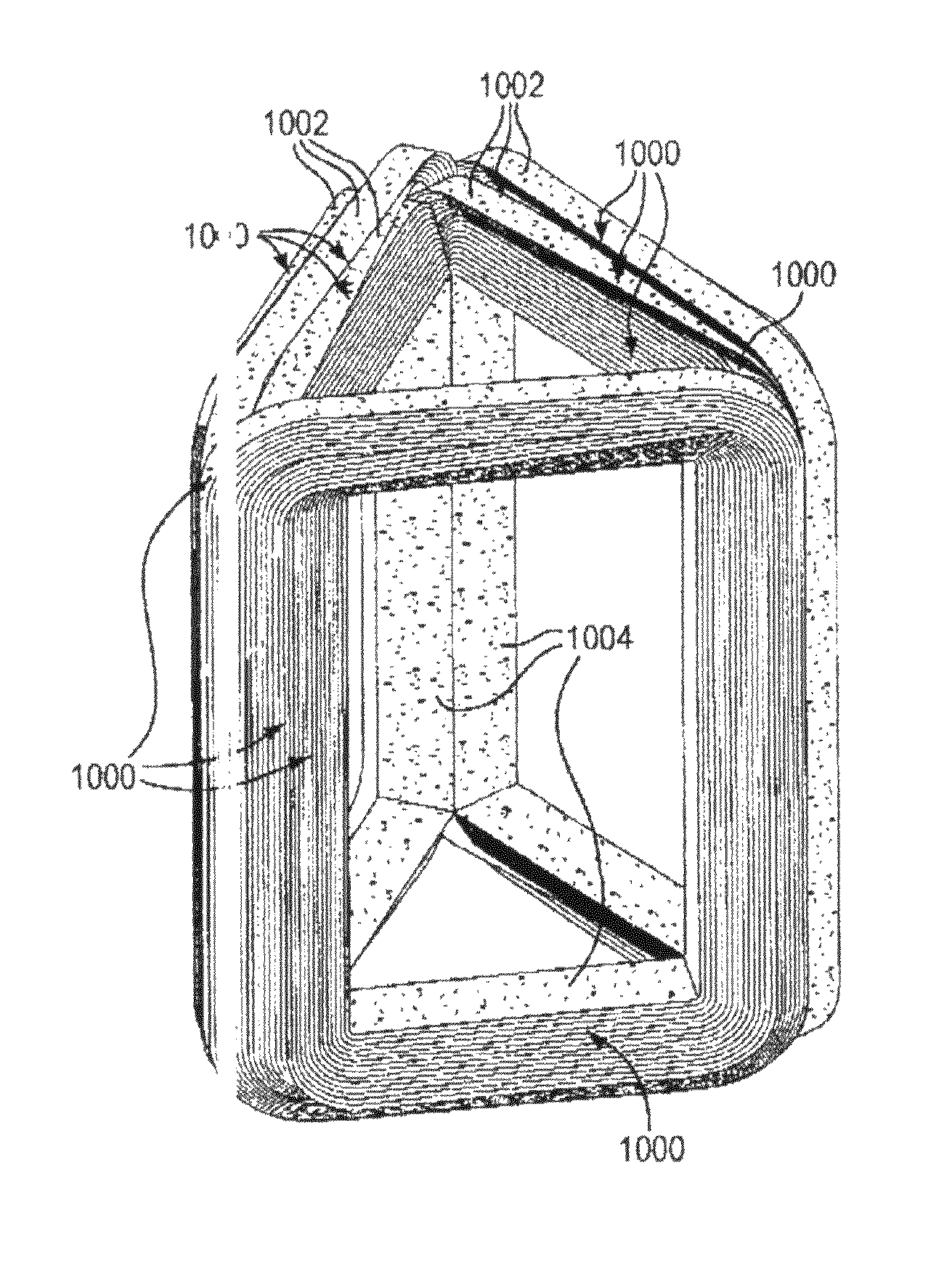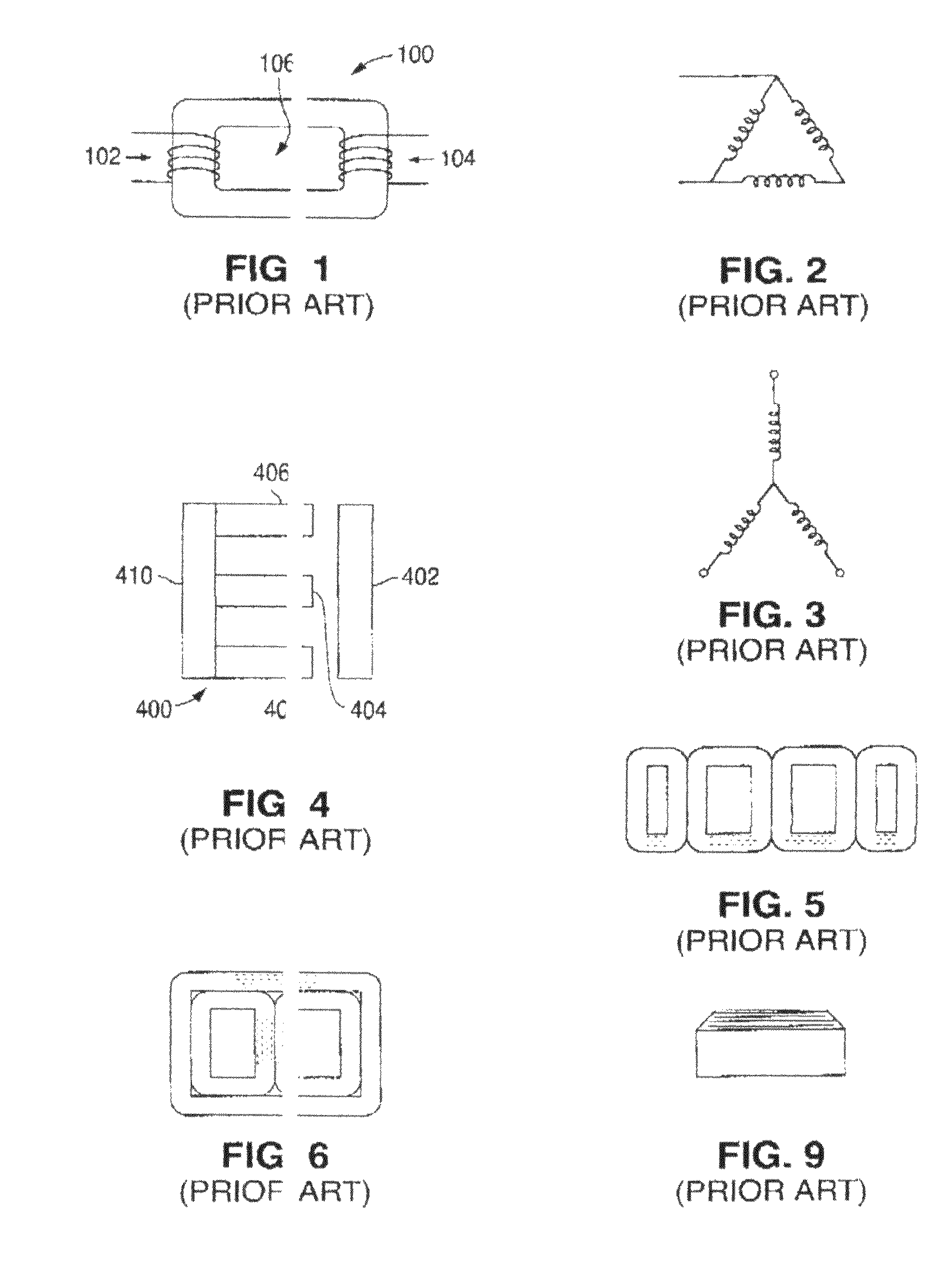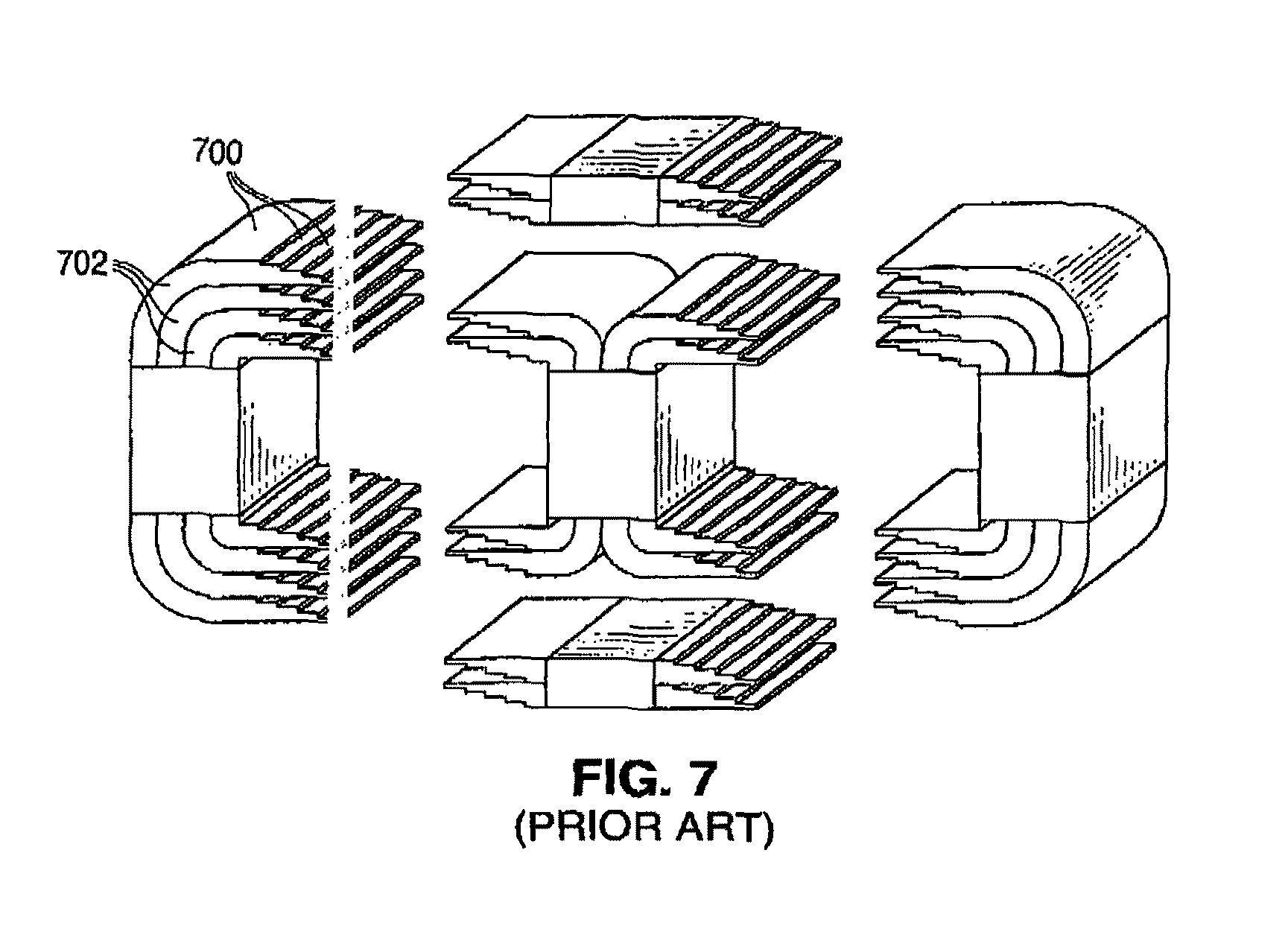Amorphous metal continuous flux path transformer and method of manufacture
a technology of transformers and flux paths, applied in transformers/inductances, magnets, magnetic bodies, etc., can solve the problems of energy loss, energy loss, and estimated 10% of all electricity generated, and achieve the effects of enhancing varnish penetration, promoting varnish flow, and reducing energy loss
- Summary
- Abstract
- Description
- Claims
- Application Information
AI Technical Summary
Benefits of technology
Problems solved by technology
Method used
Image
Examples
Embodiment Construction
[0051]The present invention includes the production of any continuous flux path amorphous metal three phase transformers. As defined above for purposes of this application, a continuous flux path core comprises a core that does not involve breaks in the core layers or require cutting of the core layers, in order to place (land) the cores on the leg of the core. This therefore requires winding the transformer coils onto the core legs. As discussed above, this can be achieved either by the use of a bobbin passed through the window of the transformer core or by using a winding tube. The use of a bobbin is very limited by design constraints since it requires enough window space to allow the bobbin to pass through the window even when the other legs are already wound with coils and thus have the effect of reducing the window size.
[0052]The alternative, and the one that will be adopted by the present invention is the use of winding tubes that are attached around the legs in a rotatable fa...
PUM
| Property | Measurement | Unit |
|---|---|---|
| voltage | aaaaa | aaaaa |
| thickness | aaaaa | aaaaa |
| angles | aaaaa | aaaaa |
Abstract
Description
Claims
Application Information
 Login to View More
Login to View More - R&D
- Intellectual Property
- Life Sciences
- Materials
- Tech Scout
- Unparalleled Data Quality
- Higher Quality Content
- 60% Fewer Hallucinations
Browse by: Latest US Patents, China's latest patents, Technical Efficacy Thesaurus, Application Domain, Technology Topic, Popular Technical Reports.
© 2025 PatSnap. All rights reserved.Legal|Privacy policy|Modern Slavery Act Transparency Statement|Sitemap|About US| Contact US: help@patsnap.com



